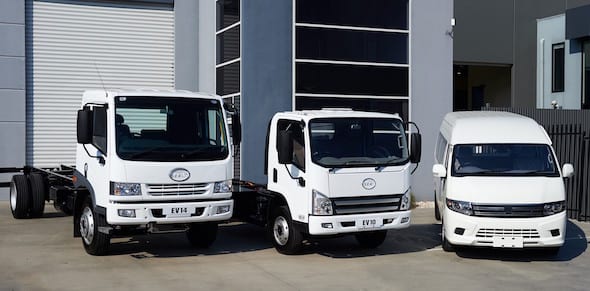A Victorian company that converts commercial trucks and vans from internal combustion engines to fully electric vehicles is set to scale up its business after securing $5 million in finance from the Clean Energy Finance Corporation’s Clean Energy Innovation Fund.
The CEFC said on Monday that SEA Electric was expected to use the finance to ramp up its manufacture of electric drive systems models that can be fitted to commercial vehicles, allowing them to be converted to 100 per cent electric operation.
SEA Electric integrates and assembles electric vehicle drive systems into a basic chassis and framework, including the cab, battery pack and electric motor, as well as the electronic infrastructure of the vehicle.
The technology can be applied to businesses providing express freight, general delivery, and waste collection services around Australia, the CEFC said.
“Electric vehicles are a very exciting part of our clean energy transition, and offer significant potential to reduce our overall carbon emissions,” said CEFC transaction lead Melanie Madders on Monday.
“Emissions from light vehicles already make up as much as 10 per cent of Australia’s total emissions, with overall transport activity expected to continue to grow in the future,” she said.
“The development of cost-effective ways to transition commercial vehicles to lower emissions technologies is paramount for cutting national carbon emissions.”
SEA executive chair Tony Fairweather said the finance would help meet growing demand for the company’s technology.
“Australia has the potential to become a global leader in the rapidly emerging electric vehicle industry, and this finance will help SEA Electric be part of that revolution,” Fairweather said.
“Vans and medium-duty trucks are suited to electric vehicle technology because businesses using them typically have relatively fixed and known route distances and vehicles return to base overnight,
which allows for recharging,” he said.
“With ongoing decreases in the cost of lithium batteries, our electric drive systems are becoming increasingly cost competitive with equivalent petrol or diesel engines, which means that businesses
using these vans and trucks can consider 100 per cent electric vehicles on a commercial basis as well as for their environmental benefits.”
“The CEFC and ARENA’s support through the Clean Energy Innovation Fund is critical for us to achieve the next step in our business growth and will help us purchase inventory needed to fulfil
orders for our electric vehicles,” Fairweather added.











